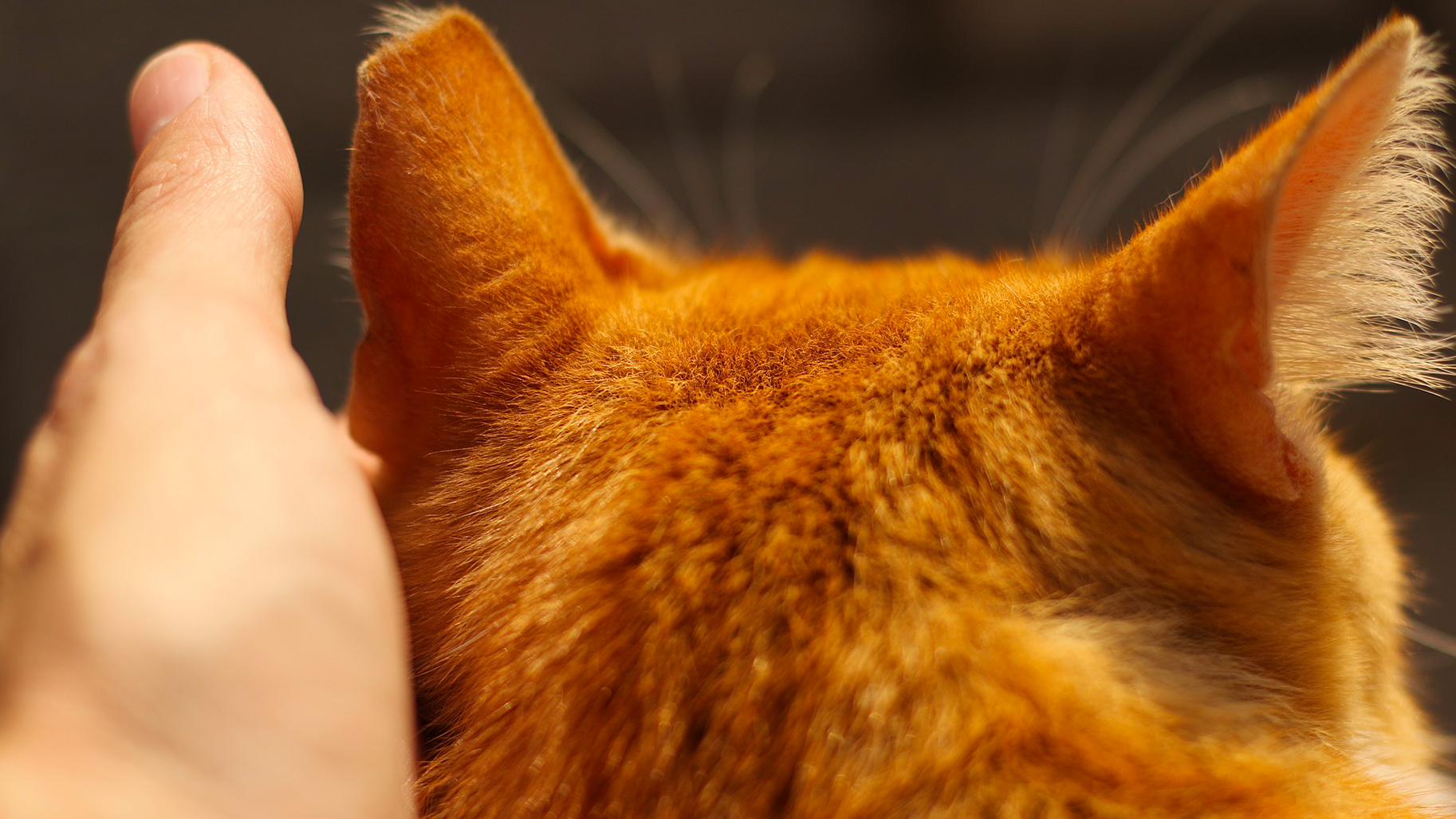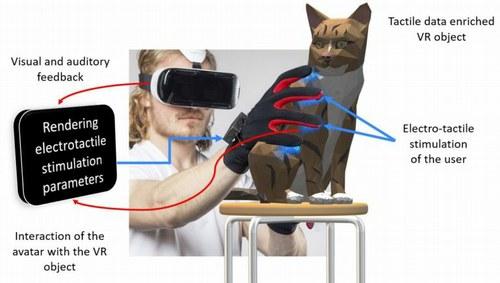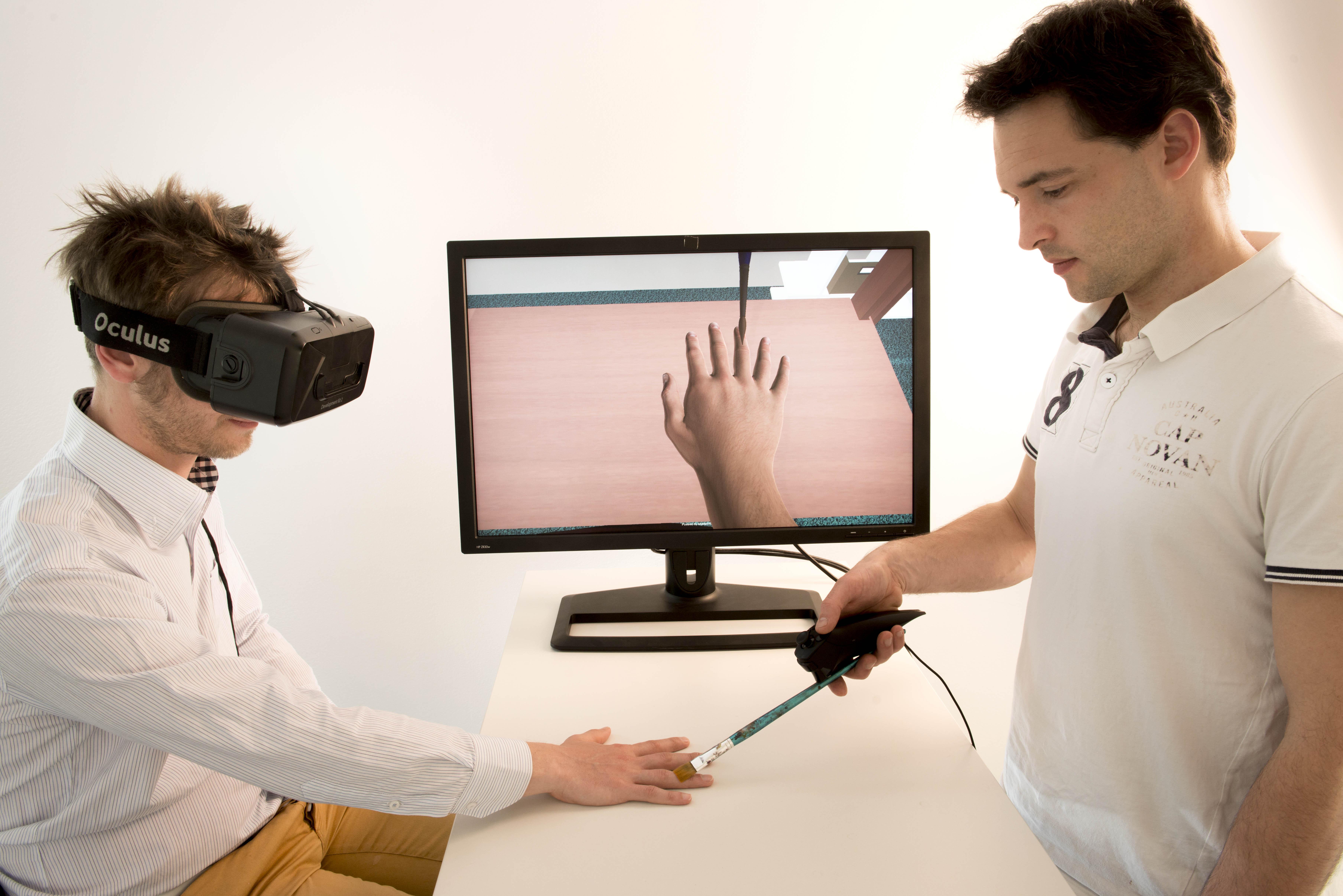
Petting the silky fur of a cat in a VR game is not something one would normally contemplate, for the proposition belongs somewhat to the realm of sci-fiesque fantaisy. Or at least it did. “The advent of head-mounted displays was a revolution in the field of virtual reality, bringing the VR experience to millions. The next milestone is likely to be tactile stimulation, which remains a crucially missing element so far,” says Ferran Argelaguet, a scientist at Inria research center in Rennes, Brittany, France.
Funded by the EU to the tune of €3.8M over the 2019-2021 period, the Tactility project aims at exploring how tactile sensations could be elicited with the help of electrical pulses delivered through a glove fitted with scores of tiny multi-pad electrodes. Coordinated by Tecnalia R&I in Spain, the consortium comprises Aalborg University, Genoa University, Valencia University, Tecnalia Serbia, Inria, as well as three companies: Manus, Smartex and Immersion.
“Haptic interaction can be subdivided in two components, Argelaguet delineates. The first is kinesthetic. It deals with force feedback.” As in a flight simulator joystick for instance. “The second regards the rendering of tactile stimuli to the skin in order to enable users to feel and touch virtual objects and textures.”
In real world, a large gamut of sensations is conveyed to our body through a myriad of minuscule cutaneous receptors with poetic names such as the Pacinian corpuscles or the Merkel disks. In virtual world, “different technologies are being considered in order to do that. Some involve ultrasound waves whereas others contemplate wearable devices fitted with electrodes delivering low-intensity electrical current to the skin.” And it is this latter avenue that is being pursued by the research project.
Surface electrodes
Surface electrodes are already routinely applied to the skin for a variety of medical treatments, including pain relief through Transcutaneous Electrical Nerve Stimulation (TENS). “Our partner Tecnalia, for its part, has done a lot of work on the so-called Functional Electrical Stimulation (FES) in the context of prostheses and rehabilitation. People with a hand prosthesis can see it moving and performing tasks but they don't have any tactile feedback on these motions. Tecnalia's intention is to provide such feedback through electrodes built in the prosthesis.” That said, “at the moment, these systems are limited to only a few ―and rather large― electrodes printed on plastic sheet.” They are thus neither numerous enough nor accurate enough to elicit much of an immersive feeling.
Verbatim
“Our goal is to miniaturize these electrodes and fit a large quantity of them into a glove. With many actuators in contact with the skin, we can expect greater spatial resolution, greater precision. We should be able to generate much richer details.” Stuffing miniaturized electrodes into glove fabric will also make it a very light solution. “It won't be one of those bulky cumbersome exoskeleton-like devices on your hand anymore.”
member of Hybrid, project team Inria, University of Rennes 1, Insa Rennes common to Irisa.
In practical terms, the scientists here will leverage the experience of two of their industrial partners. “Manus is a Dutch company specializing in motion capture gloves designed to track user's hands and fingers. We plan to use these gloves, adding inside a second textile layer made of our electrodes.” As to weaving this circuitry into the glove's fabric, “that will be assigned to Smartex, an Italian company with an experience in implementing sensors directly into textile.”
But miniutarizing the hardware is just one aspect of the project. “Tactile stimulation is a very complex issue. We are dealing with a very rich information which we don't really know so much about and which we can't encode at this juncture. We need to improve our understanding of how the modulation of parameters such as frequency, intensity or location will actually be perceived by users. Will users detect that their pinky finger is being stimulated? Will they accurately identify the location of a stimulation in their hand? Are these electrical signals capable of conveying different sensations such as vibration or tickling for instance? Can we elicit the sensation of touching different types of surfaces? We hope so, but as to eliciting the touching of very specific surfaces, that remains an open question. So, one of the goal of the projet, at this juncture, is to assess the technology: see what is feasable and what is less so.”
Embodiment
Two experiments are to be conducted at Inria. “The first is a proof-of-concept meant to test the interaction with gloves. In the second, we will study real-time integration of electro-tactile stimulation coupled with VR visual feedback.” In Rennes, scientists have long been interested in exploring the extend to which the human being can be tricked by visual illusions in conjunction with other forms of stimulation. “Four years ago, we had an experiment in which people were given the illusion of having a six-finger hand. Remarkably enough, they did try to take physical control of this additional digit that they were seeing. More recently, we had two VR users sharing control over the same avatar, thus experiencing ―for the first time― a feeling of virtual co-embodiment.” The findings suggest that one can accept a body part that they don't own or feel in control of a virtual body that they actually share with another user.
In combination with visual and auditory information, the tactile feedback is likely to reinforce no only the feeling of embodiment but also the feeling of presence. “It is a powerful illusion. In an experiment in New Zealand, participants were shown a scene featuring two virtual chairs. They were also invited to touch one real chair close to them. The study showed that, since they had touched one chair, they came to believe that the second one they saw in the VR environment also was real.” Takeaway: “One's behavior changes when one believes their are dealing with something tangible.”
Beside VR interaction, a second user case in the Tactility project regards teleoperation. “The aim is to control a robot remotedly. Working from a distance, an operator wears the glove and whenever this robot touches something, the operator will feel it.” This work package is led by the University of Genoa.
Lastly, the research findings are to be disseminated by Immersion, a French SME developing customized VR collaborative solutions for the industry. In charge of building a full-featured demonstrator based on Tactility technologies, the company will design scenarios in line with industrial requirements.


